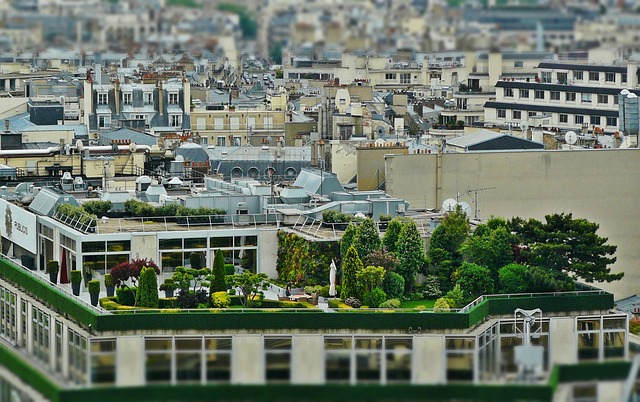Traditional cedar roofing is a popular choice for its unmatched beauty, durability, and natural water-repellent properties. The meticulous installation process starts with preparing a structurally sound roof structure and securing high-quality cedar shingles for a water-tight seal. Choosing the right species like Western Red Cedar or Northern White Cedar ensures resistance to rot, insects, and weather, while proper maintenance, including regular cleaning and annual inspections, extends the lifespan of this beautiful and low-maintenance roofing solution.
Discover the timeless charm of traditional cedar roofing with this comprehensive guide. From understanding the benefits and appeal of natural cedar shingles to navigating the installation process, this article covers all you need to know. Learn about sourcing the right cedar types for your roof and maintaining its longevity. Embrace the rustic beauty and durability of cedar, a traditional roofing choice that stands the test of time.
- Understanding Traditional Cedar Roofing: Benefits and Appeal
- The Installation Process: Step-by-Step Guide
- Choosing the Right Cedar: Sourcing and Types for Your Roof
- Maintenance and Longevity: Ensuring Your Natural Roof's Durability
Understanding Traditional Cedar Roofing: Benefits and Appeal
Traditional cedar roofing has long been a preferred choice for many homeowners and builders due to its unique beauty and exceptional properties. This natural material, renowned for its durability and aesthetic appeal, offers a timeless look that enhances the overall charm of a property. Cedar roofs are characterized by their distinct grain patterns and vibrant hues, ranging from warm browns to rich reds, which naturally weather over time, creating a distinctive, rustic appearance.
The benefits of traditional cedar roofing are multifaceted. Firstly, cedar is highly resistant to rot and insects, ensuring longer-lasting performance compared to other roofing materials. Its natural oils make it water-repellent, repelling moisture that could cause damage or promote mold growth. Additionally, cedar roofs provide excellent insulation, contributing to energy efficiency and reduced cooling costs. This versatile material’s ability to withstand extreme weather conditions makes it a reliable choice for durable, low-maintenance roofing solutions.
The Installation Process: Step-by-Step Guide
The installation process for traditional cedar roofing involves several meticulous steps, each crucial in ensuring a durable and aesthetically pleasing finish. It begins with preparing the roof structure, ensuring it’s structurally sound and ready to accommodate the weight of the shingles. A key aspect is underlayment installation, which provides an extra layer of protection against moisture and serves as a solid base for the cedar shingles.
Next, the roofing professionals carefully measure and cut the cedar shingles to fit the unique contours of the roof. These shingles are then securely fastened using nails or screws, ensuring proper overlap to create a water-tight seal. The process demands precision and attention to detail, especially when dealing with the natural curves and textures of cedar wood. This meticulous approach guarantees not only the longevity of the roofing but also its beautiful, rustic appeal.
Choosing the Right Cedar: Sourcing and Types for Your Roof
When considering a rustic and natural cedar roof, choosing the right type is paramount. Traditional cedar roofing offers exceptional durability and aesthetic appeal, making it a popular choice among homeowners seeking a timeless and low-maintenance option. Sourcing quality cedars is key; look for species like Western Red Cedar or Northern White Cedar, renowned for their superior resistance to rot, insects, and weather conditions. These natural materials not only enhance the curb appeal of your home but also provide excellent insulation, contributing to energy efficiency.
Different cedar types offer unique characteristics. For instance, Western Red Cedar is known for its vibrant red hue and strong aroma, while Northern White Cedar has a lighter tone and is particularly versatile in crafting various roof styles. Understanding these variations allows you to select the perfect fit for your home’s design and ensure a beautiful, long-lasting traditional cedar roofing installation.
Maintenance and Longevity: Ensuring Your Natural Roof's Durability
Natural cedar roofs, when installed and maintained properly, offer exceptional longevity. Regular cleaning to remove debris and inspections for any signs of damage or rot are key. This proactive approach ensures your traditional cedar roofing maintains its beauty and structural integrity for decades. A simple annual maintenance routine can prevent costly repairs down the line, preserving the natural allure and enduring quality of this sustainable roofing choice.
Unlike synthetic materials that may require frequent replacement, high-quality cedar is resistant to fading, cracking, and peeling. By understanding and adhering to proper care guidelines, homeowners can enjoy a robust roof that ages gracefully, contributing to the overall charm and curb appeal of their property while minimizing environmental impact through its long-lasting natural construction.
Traditional cedar roofing offers a timeless, natural aesthetic that enhances any home or building. By understanding the benefits, choosing the right material, and following proper installation and maintenance practices, you can ensure your rustic cedar roof provides durability and beauty for years to come. This comprehensive guide equips homeowners with the knowledge to navigate the process, from sourcing high-quality cedar to maintaining its longevity. Embrace the charm of traditional craftsmanship and let your natural cedar roof become a stunning feature that stands the test of time.
